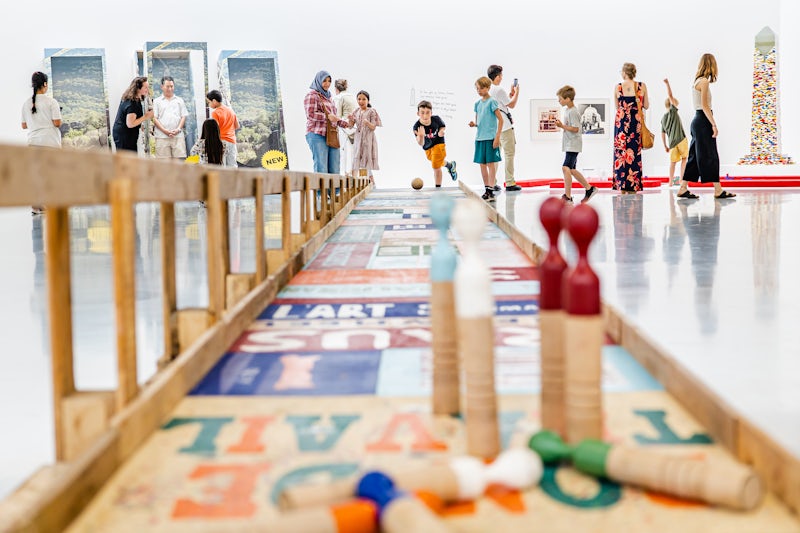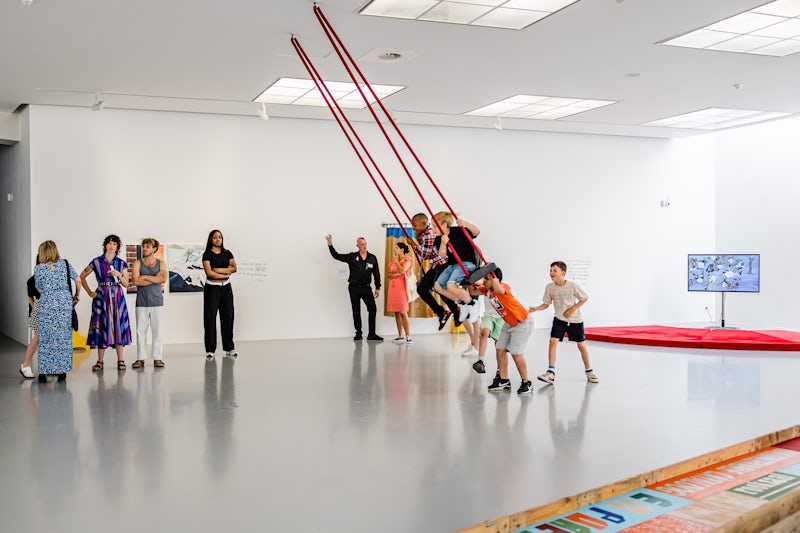
Design team sought for ambitious new museum building project M HKA
Architects can apply now
Do you know the masterpiece by the Chinese artist Wang Du in the collection of the Flemish Community, or the groundbreaking multimedia installations that established Yang Fudong as a symbol of the Shanghai art scene? In recent years, the collection of the Flemish Community has received considerable attention, especially for its emphasis on artists from Flanders. The fact that Flanders possesses a top collection of international contemporary art has often been overlooked until now. This is set to change.
Indeed, the institution responsible for its presentation, the M HKA, has thus far lacked the space to showcase an overview of these works. It thus presents, in three separate rooms, segments of that collection, featuring ensembles by legendary American artist Gordon Matta Clark, works by the 1970s local collective Mass (and Individual) Moving, and pieces by Kazakh artist Askhat Akhmedyarov.


M HKA: Local Roots, Global Vision
M HKA showcases top works by artists from Flanders such as Otobong Nkanga, Panamarenko, or Luc Tuymans, but also boasts a diverse collection featuring artists from around the world, including American artist Cindy Sherman and Russian artist Ilya Kabakov. It refers to itself as a Eurasian Museum, boasting one of Western Europe’s most significant collections of art from the former Soviet Union, including works from Ukraine, Russia, the Caucasus, and Central Asia — regions now proving strategically important for Europe’s future. Last summer, under the auspices of both the Flemish prime minister and Ukrainian President Volodymyr Zelenskyy, it organised another notable exhibition of the collection in Kyiv. This exhibition, showcasing artists such as Berlinde De Bruyckere, Marlène Dumas, Kerry James Marshall, and Orlan, was recognised as one of the top ten exhibitions of the year in Europe by the English art magazine Frieze. In Flanders itself, however, there is currently little attention paid to these kinds of artistic expressions. But this is about to change.


Relaunch of the new M HKA construction project
In its coalition agreement, Flanders envisions a comprehensive museum infrastructure for M HKA. Alongside KMSKA, M HKA stands as one of two local cultural heritage institutions through which Flanders strives for international excellence. After the initial architecture competition failed to materialise, there was a prolonged period of uncertainty regarding this endeavour. Flanders utilised this time to refine the project further. Minister-president Jan Jambon announced the relaunch in 2022, and in April 2023, the government approved in principle a new budget and an updated schedule of requirements, with a construction cost of 85 million euros and a total projected cost, including future indexations, of 130 million euros.
Architect wanted
Today, the Flemish government is taking a significant step in the new building process of M HKA. The architecture competition is now open internationally and can be accessed through the Flemish Master Builder website. It is a tailor-made procedure. What makes it special is the construction team formula, which offers a method to build with both quality and cost-effectiveness in mind. This involves initially selecting an architectural team, which establishes the framework, followed by the selection of a contractor. However, both are tasked with jointly tackling the concrete elaboration within the construction team. While the architectural team is responsible for ensuring architectural quality, the contractor plays a proactive role beyond mere plan execution, actively contributing to finding optimal solutions for implementation. Follow the infrastructure project via the website of the Flemish government’s Department of Culture, Youth and Media.
The Museum of Contemporary Art Antwerp of the future
In a contemporary architectural setting, the new museum will offer the much-needed collection space that M HKA currently lacks, enabling the display of its own collection in a qualitative and sustainable manner. It will also facilitate the organisation of high-profile international exhibitions that are prominent on the global circuit. The new museum will accommodate cutting-edge artistic, curatorial, and interdisciplinary research at the intersection of art and science. Additionally, it will facilitate state-of-the-art preservation and management of the collection, innovative production, and provide space for the Centre for Art Archives Flanders and film museum operations.
In addition, it will fully embrace the social and event spaces characteristic of contemporary art museums today, fostering a public-oriented environment similar to what M HKA is cultivating with its summer exhibition ‘Museum Spelen’ (Museum Games).
This fulfils several of Jan Jambon’s ambitions as Flemish prime minister. Flanders has a backlog when it comes to cultural heritage, and museums serve as its flagships. Flanders wants to pioneer operations that can serve as examples for its own museums. M HKA will be a state-of-the-art museum that puts Flanders at the forefront, both locally and within a global context. This international dimension is essential for Flanders.







